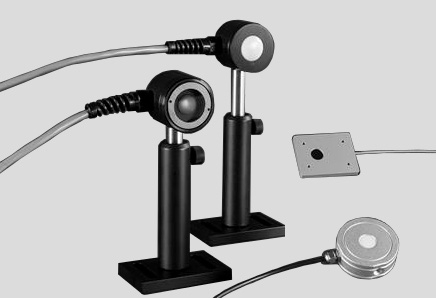输入光学元件
Light measurement units are defined around very specific spatial
responses. A carefully designed input optics system is essential if
measurement accuracy is to be achieved.
Two laws of geometrical optics apply directly to radiometry and photometry: the inverse square law and the cosine law.
The inverse square law defines the relationship between irradiance from a
point source and the distance to the measurement surface. It states
that the intensity per unit area varies in inverse proportion to the
square of the distance between the source and surface.
In other words, if you measure 16 W/cm² at 1 meter, you will measure 4
W/cm² at 2 meters, and can calculate the irradiance at any other
distance. A well defined measurement plane and approximate point source
are required for valid interpolations.
In radiance measurements (W/cm²/sr), where a detector with a narrow
viewing angle looks at a much larger, uniform area source, the area of
the source that the detector sees increases as the detector moves
farther away, counteracting the effects of the inverse square law and
making the reading independent of distance.
Radiance measurements are useful for characterizing large area sources such as CRT's and backlit displays, or for diffuse, uniformly illuminated surfaces.
The cosine law refers to the relationship between the irradiance on a
surface and the incident angle. The intensity falls off in proportion to
the cosine of the reflected angle, since the effective surface area is
reduced as the angle increases.
Irradiance and Illuminance detectors, especially those with filters that
restrict off-angle light, require cosine correction to properly
quantify light coming from all angles. Inaccurate cosine response is one
of the biggest sources of error in full immersion applications.
There are many applications in light measurement that require
specialized input optics. For example, intense laser beams must be
diffused so that the narrow beam does not locally saturate the receiver.
Many high intensity ultraviolet sources require temperature resistant
remote optics that offer cosine spatial responses and side viewing.
Use the table below to browse our standard input optic offerings. If
you have questions about any of our optics, need assistance selecting
the right optic for your application, inquiring about pricing, or are
looking for a customized solution, please contact us here or by filling out the form at the bottom of the page.


